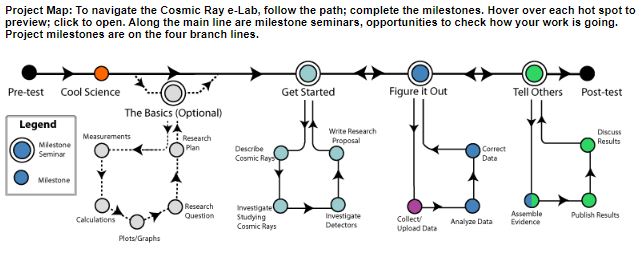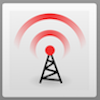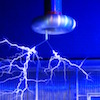Friday Flyer - April 3, 2020


Spotlight on QuarkNet e-Labs
QuarkNet has had, since the aughts, a platform that lends itself very well to online and remote learning. Well, two, actually: the QuarkNet Cosmic Ray e-Lab and the QuarkNet CMS e-Lab.
The Cosmic Ray e-Lab was the first of these, built to enable teachers and students to upload and analyze data from the growing number of QuarkNet cosmic ray detectors. There are now well over 100,000 cosmic ray data files—good, bad, and ugly—waiting for your students to analyze and use in scientific investigations. If you are an old hand with the Cosmic Ray e-Lab, great. If you need a little help to get started or a refresher, go to Resources for Cosmic Ray Analyses Online. It gives useful information on how to experiment with rates over time, lifetime, and speeds of cosmic ray muons.
Building on the experience QuarkNet had with the Cosmic Ray e-Lab, we designed the CMS e-Lab for accessing, understanding, and investigating data from the CMS detector in the Large Hadron Collider at CERN. The CMS e-Lab has dilepton and one-lepton, one-neutrino data that can be analyzed in a number of ways—not only mass plots of favorite parent particles like the Z boson, but histograms of quantities like momentum, energy, and direction. If you need to get a start as well as ideas for investigations, go to Using the CMS e-Lab.
How to get to the e-Labs? If you are reading this, you are already close because you are on the QuarkNet site. If you look at the menu at the top, you will see E-LABS as a choice. Go to that and the Cosmic Ray and CMS e-Labs will drop down as new choices. It is that easy.
How about a login? Well, if you have a login to one e-Lab, you have can log into both. If you do not, send an e-mail to e-labs@fnal.gov with your name, e-mail, school, city, and U.S. state or non-U.S. country. We will get you sorted out. And while you wait, or if you just want to test the e-Lab out, you can always log in as a guest.


News from QuarkNet Central
Mentors and teachers at each QuarkNet center will decide whether and how they can meet this summer. Also, centers may want us to re-tool QuarkNet National Workshops such as Neutrino Data Workshop for remote online participation. If your center needs to change plans, postpone the workshop, or move it online, or has any request that might help, please let Spencer, Shane, or Ken know. We can work it out.
BAMC—the Big Analysis of Muons in CMS—moves ahead at full speed. The latest:
- The date for BAMC is now set for Friday, April 17.
- The Student Launch and Teacher Launch pages are now accessible from the QuarkNet website top menu. Go to MASTERCLASSES and they will be the last two choices in the dropdown.
- We will have another Q&A and check-in session for BAMC teachers next Wednesday.
- Teachers who have registered can expect a new e-mail soon.

Physics Experiment Roundup
The Large Hadron Collider is 10 years old. Read up: CERN staffer and QuarkNet pal Achintya Rao has penned LHC at Ten: Entering Uncharted Waters on the CERN website, and symmetry gives us 10 years of LHC physics, in numbers to help us see where we are going and how far we have come. At the STAR collaboration of the Relativistic Heavy Ion Collider at Brookhaven National Lab, physicists have measured the binding energies of a nuclei containing strange quarks, shedding light on how nucleons interact strongly with strange matter. This measurement, according to Physics Today, enables neutron star models that include strange matter to agree better with astronomical observation. And physics does its bit: APS Physics reports how some of the big physics labs are helping in the fight against COVID-19.

Resources
Don Lincoln comes through again with a new video, What Happened before the Big Bang?, to brighten our online offerings. For online teaching, we can look to the QuarkNet Resources for Teaching Online page, with some new additions since last week, as well as an APS NEWS article, Moving Courses Online on Short Notice.
We poked around a bit more to locate Data Activities that lend themselves to remote online learning. We've added Comments to Mean Lifetime Part I: Dice and to Histograms: Uncertainty to suggest adaptations. And some activities really need little or no modification:
- What Heisenberg Knew
- Energy, Momentum and Mass
- CMS Data Express
- ATLAS Data Express.
You can find these in the DATA ACTIVITIES section of the QuarkNet site; to see the comments, you need to be logged in. Need a login? Contact Ken or Shane.

Just for Fun
Scientists stuck at home! What can they do? They can go to the kitchen, since TedEd shows that chemists can bake cookies while ars tecnica explains that physicists hold the key to good fried rice. Hat tip to Marge Bardeen for both!
And xkcd.
QuarkNet Staff:
Mark Adams: adams@fnal.gov
Ken Cecire: kcecire@nd.edu
Spencer Pasero: spasero@fnal.gov
Shane Wood: swood5@nd.edu